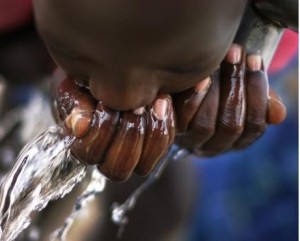Institute for Water, Environment and Health, Hamilton, Canada
14-Feb-2012
The impact of unsafe water and sanitation on the death rates of children under five and mothers in the year after childbirth has been quantified for the first time by Canadian-based researchers.
In a paper published in the UK journal Environmental Health, researchers at the United Nations University and McMaster University analyzed data on access to safe water and adequate sanitation across 193 countries.
Using regression analysis techniques to factor out other variables like income and average children per mother, they compared safe water and sanitation rates with maternal and child deaths in those countries.
Dividing the 193 countries into four tiers (“quartiles”), they found that countries ranked in the bottom 25% in terms of safe water had about 4.7 more deaths per 1,000 children under five years old compared to countries in the top 25% tier.
The researchers estimate that, when related to safe water access, the difference in mortality between each 25% tier is 1.17 deaths per 1,000 children under five.
Similarly, when judged on access to adequate sanitation, countries ranked in the bottom 25% tier had about 6.6 more deaths per 1,000 children under five years old compared to countries in the top 25% tier.
Put another way, with respect to the availability of adequate sanitation, the difference in mortality between each of the four tiers of countries is estimated at 1.66 deaths per 1,000 children under five.
News release in full: click here
Coverage summary: click here
Example coverage: by USA Today, click here, by the EFE newswire, Spain, click here
